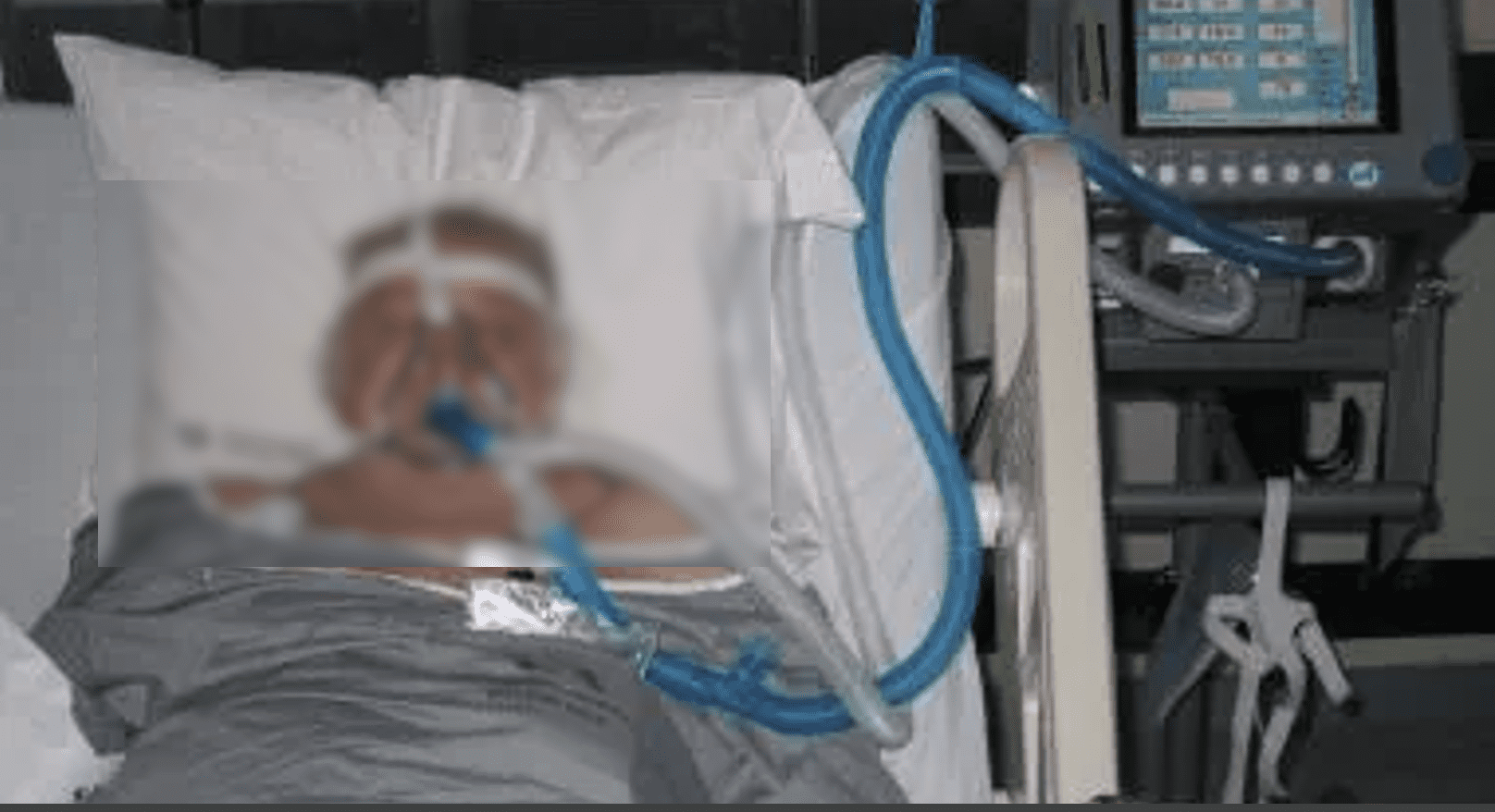In this part of the Impossible Airway Made Possible, I want to specifically look at that period between induction and laryngoscopy.
Our case is an 86 yo who presents with worsening dyspnoea for the last 24 hours.. The diagnosis made in the emergency department, is pneumonia. It is difficult to keep the patient’s oxygen saturations above 88% on a rebreather mask. She is tiring and her work of breathing is increasing and she looks a little drowsier than when arrived, but does wake quickly to her name being called. Haemodynamically she is quite stable. We’ve all seen this patient before. The decision is made to use Non-Invasive Ventilation (NIV) for the purposes of pre-oxygenation as we have decided that intubation is needed and promptly, given the rapid progression of her tiredness.
You can call for help at this point if you have time.
The preparation time, the LEMON assessment and every other decision including the decision to not try an awake intubation (as it would result in significant desaturation quickly) has all been made. We are now at the point where we are giving the medications for induction.
What happens in that 1-1.5 minutes following the delivery of the induction medications? This is not a time we often think about, but it is a crucial part of the process.
What Medications would you use?
For the purposes of maintaining NIV and maximising pre-oxygenation and even using delayed sequence intubation and maintaining haemodynamic stability, Ketamine at a dose of 1-2 mg/kg is the drug of choice. It’s onset of action is 45-60 seconds when given intravenously, peaking in effect at 1-5 minutes and having a duration of about 20 minutes.
A smaller dose of Ketamine can be given (as low at 10mg IV) to facilitate NIV, especially if the patient is not tolerating the mask. Deeper sedation would not be appropriate with NIV as the potential for gastric insufflation leading to emesis and aspiration increases.
The choice of paralytic agent may matter a little less. Rocuronium is a popular choice. At doses of 0.6mg/kg it has a 1-2 minute onset of action, however at higher doses of 1.2mg/kg, it’s onset of action parallels suxamethonium ie., 45-60 seconds. Rocuronium will last between 20-70 minutes, depending on the dose and suxamethonium’s duration about 5-8 minutes.
Questions I ask in this specific case
- Should we keep this patient sitting up on NIV, or lie the patient down and perform traditional RSI?
- Should we use apnoea oxygenation during this induction period?
- Can we bag valve mask(BVM) the patient during this induction period?
Should the patient be sitting up and on NIV until laryngoscopy?
In this case we kept the patient sitting and on NIV. The issue in most cases and certainly in this one, is that the patient’s saturations dropped, when not sitting up.
The patient was kept in the sitting position with NIV. Ketamine and high dose Rocuronium were administered rapidly in that order. The patient was maintaining saturations.
At 30 seconds post induction medication, the NIV was removed, the back of the bed dropped and the patient was placed in an almost flat position(ear to sternal notch). Intubation was attempted immediately and successfully. It was estimated that the time to lie the patient and prepare took approximately 15 seconds ie., there was no ventilation for 15 seconds. Saturations were maintained and laryngoscopy was attempted, with first pass success.
Should we use apnoeic oxygenation?
I am a firm believer in apnoeic oxygenation and I would say that there is no harm in having nasal cannula on under the NIV mask. However we have evidence that, although it works in sedation and elective intubation, it may be less effective in critically ill patients requiring an airway.
Apnoea oxygenation depends on lowering of alveolar pressure due to less carbon dioxide being returned to the alveoli than oxygen is removed. The recent study(1) demonstrated that it made no difference in critically ill patients.
My bottom line is I use it. It takes no time away from what I am doing and is simple.
What the trial on apnoeic oxygenation showed
Semler et al(1) published a randomised, open label, parallel group, pragmatic trial.
150 patients were randomised to receive apnoeic oxygenation( high flow nasal cannula at 15L/min of 100% oxygen) or usual care(no supplemental oxygen).
The Primary Outcome was ‘lowest arterial oxygen saturation’ measured by pulse oximetry between induction and 2 minutes post endotracheal tube placement.
Secondary outcomes included the incidence of hypoxaemia(<90%), severe hypoxaemia(<80%) and a > 3% decrease in SpO2 from baseline.
The result showed no significant difference between apnoeic oxygenation and usual care with respect to primary outcome.
There were some limitations to the study, including a single centre and the fact that we know little about the other practices surrounding usual care. Also 15L/min is a low flow in my mind. I will deliver as much as possible. Up to 60L/min has been used in other studies(2) to decrease the incidence of desaturation. The study was also powered to detect a 5% difference. Smaller differences may have been missed, although their significance, may be questionable.
Read also ‘The effectiveness of apnoeic oxygenation questioned’
Can we BVM the patient during the induction phase?
We have been horrified when seeing anyone try to BVM during this phase. The concern is that if the pressure the BVM generates overcomes that pressure of the oesophageal sphincter, we can insulate the stomach which may result in vomiting (making the intubation difficult) and aspiration.
In my view, the techniques we use when using the BVM can protect against insulating the stomach. Slow compression of the bag (with a PEEP valve and at maximum 10 breaths per minute), adequate to just make the chest rise, will give adequate ventilation whilst minimising pressures we generate and minimise the chances of aspiration. There is good evidence(3) that BVM can be used during the induction period.
What the evidence for BVM showed
Casey et al(3) published a multi centre, parallel group, unblinded, randomised trial, conducted in ICU’s. It compared BVM with no ventilation.
The Primary outcome was comparing the lowest saturations reached between the time of induction and 2 minutes following intubation.
The specifics of the approach in this study were:
- A PEEP valve was used set at 5-10cm H2O
- Oropharyngeal airway was used
- 2 Handed BVM grip was used
- 10 ventilations per minute were given
- The smallest volume possible was delivered, that would result in a chest rise.
There was no difference in oxygen requirements and no difference in rates of aspiration(surrogate markers were used for this) between the two groups.
For every 9 patient undergoing intubation, BVM ventilation between induction and laryngoscopy would prevent hyperaemia(<80%) in 1 patient.
The bottom line is that you can use BVM, with an appropriate technique during the induction period, to keep saturations up. You will definitely use it when saturations drop.
In conclusion, we have strategies to deal with that nervous period between induction and laryngoscopy, where our concern is the patient desaturating. A strategy of maximising pre-oxygenation is paramount inpatients such as in this case. Although apnoeic oxygenation has not been found to be effective in preventing hypoxia in the critically unwell, it takes no extra time and I leave it on. The use of the BVM has been shown to not increase the rate of aspiration with proper technique, so it is appropriate to use, if the saturations are not being maintained.
References
- Semler M W et al. Randomised trial of Apneic Oxygenation during Endotracheal intubation of the Critically ill. Amer J Resp and Crit care med 2016; 193;273-280
- Wimalasena Y, et al. Apneic oxygenation was associated with decreased desaturation rates during rapid sequence intubation by an Australian helicopter emergency medicine service. Ann Emerg Med 2015;65:371–376.
- Casey JD et al. Bag-Mask Ventilation during Tracheal Intubation. NEJM 2019;380:811-821










